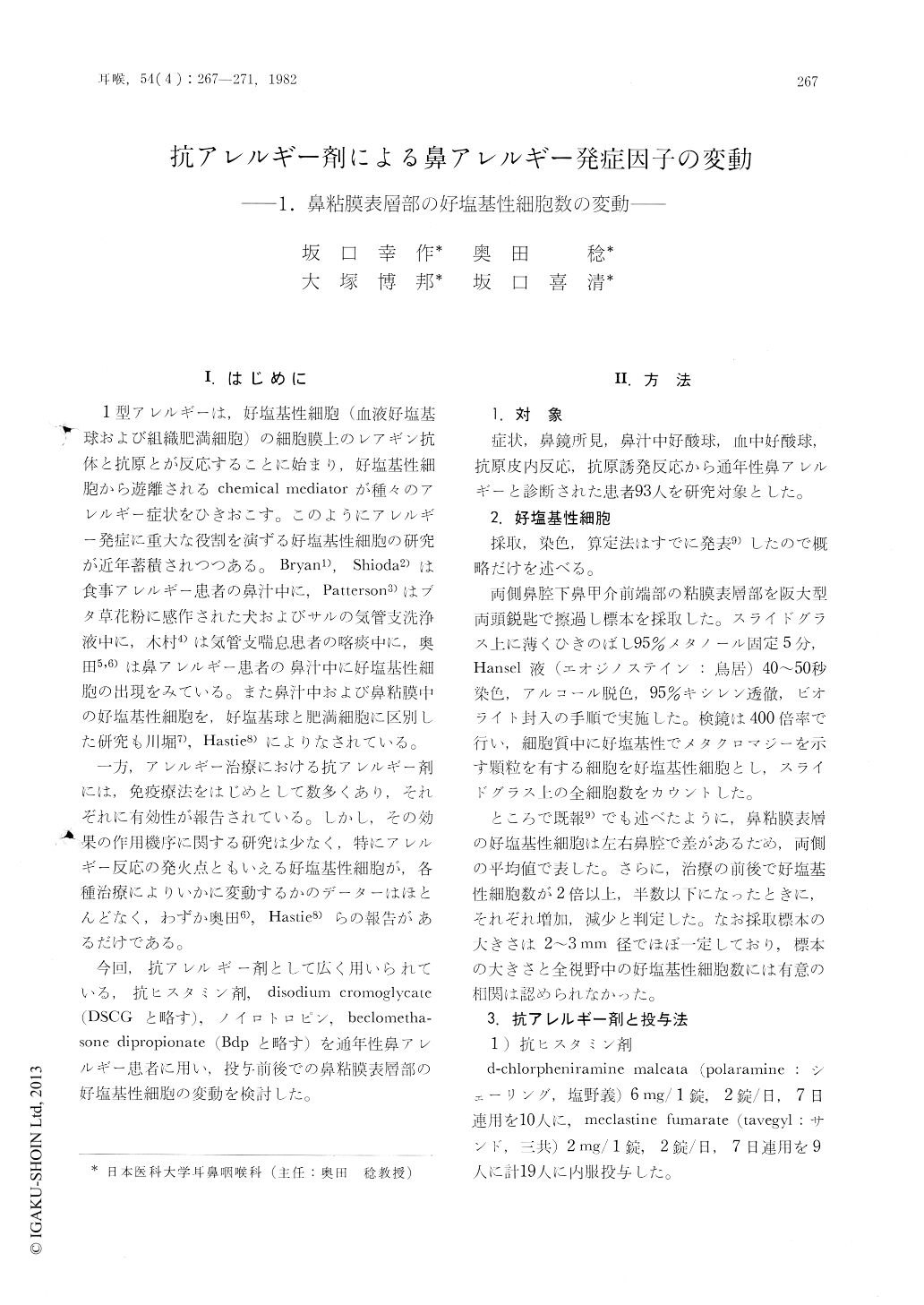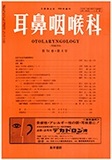Japanese
English
- 有料閲覧
- Abstract 文献概要
- 1ページ目 Look Inside
I.はじめに
1型アレルギーは,好塩基性細胞(血液好塩基球および組織肥満細胞)の細胞膜上のレアギン抗体と抗原とが反応することに始まり,好塩基性細胞から遊離されるchemical mediatorが種々のアレルギー症状をひきおこす。このようにアレルギー発症に重大な役割を演ずる好塩基性細胞の研究が近年蓄積されつつある。Bryan1),Shioda2)は食事アレルギー患者の鼻汁中に,Patterson3)はブタ草花粉に感作された犬およびサルの気管支洗浄液中に,木村4)は気管支喘息患者の喀痰中に,奥田5,6)は鼻アレルギー患者の鼻汁中に好塩基性細胞の出現をみている。また鼻汁中および鼻粘膜中の好塩基性細胞を,好塩基球と肥満細胞に区別した研究も川堀7),Hastie8)によりなされている。
一方,アレルギー治療における抗アレルギー剤には,免疫療法をはじめとして数多くあり,それぞれに有効性が報告されている。しかし,その効果の作用機序に関する研究は少なく,特にアレルギー反応の発火点ともいえる好塩基性細胞が,各種治療によりいかに変動するかのデーターはほとんどなく,わずか奥田6),Hastie8)らの報告があるだけである。
今回,抗アレルギー剤として広く用いられている,抗ヒスタミン剤,disodium cromoglycate(DSCGと略す),ノイロトロピン,beclomethasone dipropionate(Bdpと略す)を通年性鼻アレルギー患者に用い,投与前後での鼻粘膜表層部の好塩基性細胞の変動を検討した。
In order to elucidate the mode of action of antiallergic drugs, the number of basophilic cells was investigated. Before and after treatment with antiallergic drugs, specimens were obtained by scratching the mucosal surface of the inferior turbinate, and basophilic cells were counted.
The results indicated that the number of the basophilic cells were decreased in 53% of the patients treated with Beclomethasone, in 50% with Neurotropin, in 47% with antihistamine, in 40% with Disodium Cromoglycate, and in 26% in the control group. In Beclomethasone treatment, the number was remarkably decreased with a good correlation to the decrease of the degree of nasal response to the causal allergens, and this fact showed that Beclomethasone is effective by reducing basophilic cells.
The number of basophilic cells is a useful and objective parameter to judge the effectiveness of antiallergic drugs.

Copyright © 1982, Igaku-Shoin Ltd. All rights reserved.


